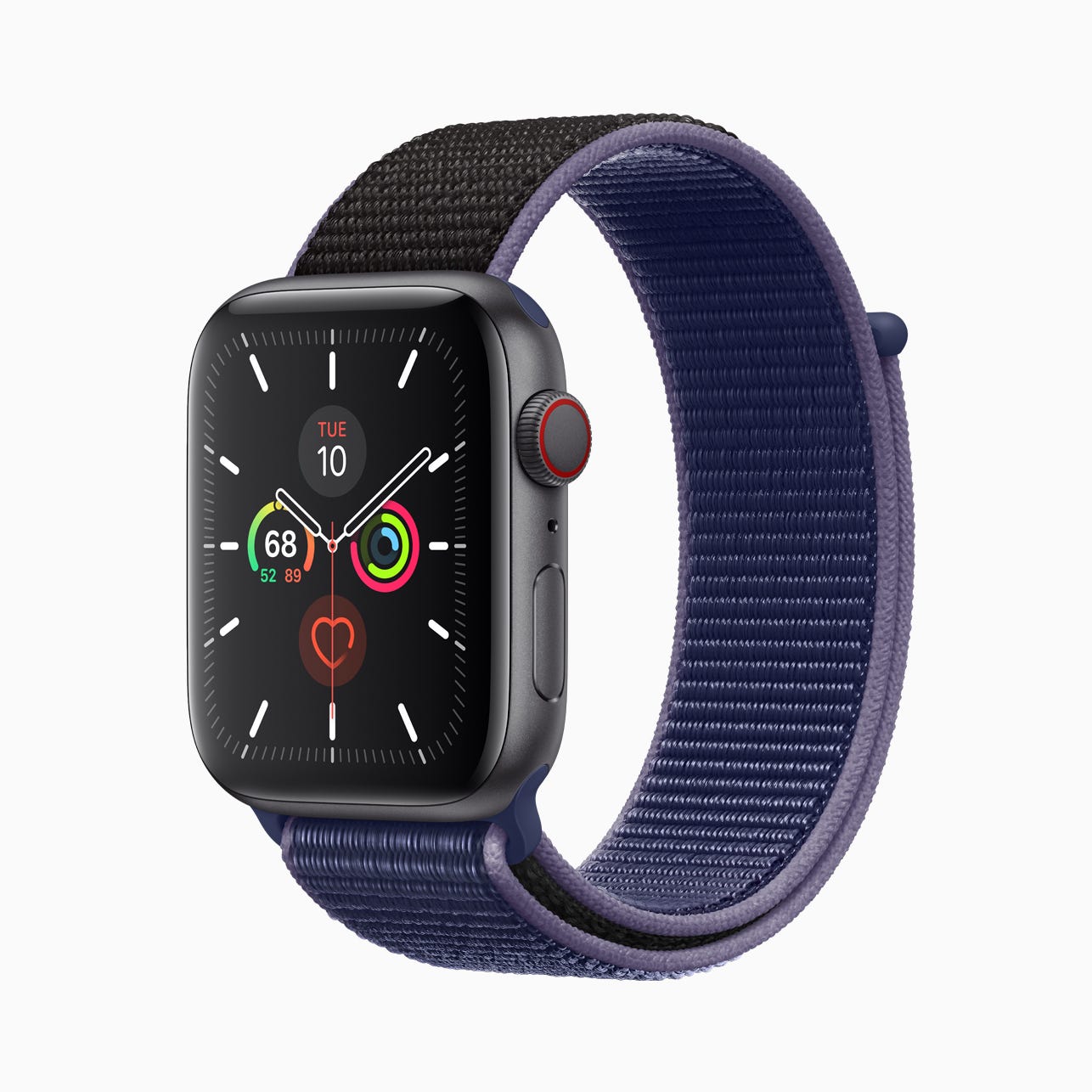LATEST FINANCIAL NEWS
Apple Watch Series 5 review: Always-on display, suspect battery
Edward C. Baig
USA TODAY
Published 6:56 AM EDT Sep 18, 2019
Are you crazy for being able to check the time by glancing at the watch on your wrist?
Except all the Apple Watch’s leading up to the new Series 5 model that reaches stores on Friday couldn’t meet this basic requirement – until, that is, you raised the watch up towards your face. The screens on Apple’s timepieces were otherwise dark.
Fortunately, Apple has addressed this deficiency through an “always-on” Retina display on Series 5 – frankly, the main new feature in a light upgrade over last year’s Series 4, which the new watch now replaces.
But did Apple introduce a new problem: a battery that poops out way too soon? More on that in a moment.
The latest watches start at $399 for a 40mm case version with GPS only and $499 for the GPS + Cellular model. The larger 44mm-case Series 5 start at $429 and $529, respectively, for GPS and GPS + Cellular versions.
Prices can climb a whole lot higher. You can easily spend well into the four-digits, for example, for an Apple Watch with a Hermes case and wristband.
Apple sells Nike-branded versions, too.
iPhone 11 review: Great camera, long battery, but not a must-buy
Sleeping on the job?: New Apple Watch, but still no sleep tracking
What you ultimately pay depends on which aluminum and stainless steel, ceramic, or titanium cases and finishes you combine with which watch band; along those lines, you have more flexibility now to mix and match. (Your older bands still fit, too.)
If you’re seeking an especially good bargain, Apple has lowered the starting price for the Series 3 watch that remains in the lineup. It’s down to $199 for GPS and $299 for GPS + Cellular, both with a 38mm case. The 42mm case lifts Series 3 prices to $299 and $329.
Advantages of an always-on display
Friends have told me that the absence of an always-on display is the reason some of them have held off buying an Apple Watch. While it didn’t stop me from purchasing a Series 2 in 2016, also since discontinued, I’ve groaned about the lack of this feature myself.
Having to raise your wrist to peek at the time, or for that matter, other glance-able information such as your next appointment or the activity rings tied to your fitness routine, may be a faux pas socially or in the office. The people you’re engaging with may think they’re boring you.
And an always-on display serves a real purpose when you’re standing on a crowded bus, riding a bike, cooking or are otherwise occupied.
According to Apple, swimmers can see their metrics underwater.
Moreover, depending upon the custom watch face you choose, you might want a display others can see if only to make some sort of fashion statement. Not that Apple has opened up the ability for third-party developers to design their own custom faces, still something of a bummer in my view. (Developers can create their own “complications” –watch-speak for information you can display on the screen – that work with Apple’s own watch faces. You might check out ball scores through the MLB app, for example.)
Of course, there’s also stuff on the watch that you don’t want prying eyes to see, your next calendar appointment or certain notifications, perhaps. Apple says it won’t reveal potentially sensitive information in always-on mode.
To help preserve the battery, the screen in always-on mode dims a bit but is still visible. The second hand on certain watch faces disappear altogether. On the “California” watch face, the blue background fades to black but you can still make out the numbers and watch hands.
The screen brightens again when you tap it or raise your wrist.
Battery troubles
But while Apple claims about 18 hours of battery life with Series 5, same as prior models, the battery on the first cellular watch the company supplied for testing died mid-afternoon after getting a full charge overnight. The battery on a replacement unit Apple swapped out fared far better; it had 10% of juice remaining at 11:20 p.m. after also being charged the night before, suggesting something more line with what Apple is saying. As always, battery results vary depending on how you use the watch. It’s also entirely possible that I got the odd bum unit. I’m raising a red flag just the same.
For sure, what makes a smartwatch smart is that it can do a lot more than tell you the time. In that respect, the new timepiece doesn’t move the watch hand much further than Series 4, which last year brought bigger screen sizes, and such cool – and potentially lifesaving features – as fall detection and an ECG (electrocardiogram) that measures the timing and strength of the electrical signals that keep your heart pumping. Those are all holdover features in Series 5.
The new watch adds a compass, too, that might be useful when you’re getting directions – Yelp’s Watch app, for example, can point the way when you’re looking for a restaurant you’ve never been to before. The compass also displays elevation, incline, and current longitude and latitude, all potentially helpful for hikers.
The cellular version of Series 5 also supports international emergency calls.
Series 5 will be preloaded with watchOS 6, adding, among other new features, menstrual cycle tracking and a Noise app that can alert you when loud sounds around you reach potentially damaging decibel levels.
But watchOS 6 will also come to all the prior Apple Watch models, though not until later in the fall for Series 1 and Series 2.
I’m certainly pleased Apple has finally gotten around to producing a watch display that doesn’t sleep. I’m lamenting the continued omission, however, of a native sleep app, another feature many people have been asking for. I say that well aware that there are third-party sleep apps that let you monitor your Zzzz’s through the watch.
Keep in mind that wearing a watch to bed means you’d have to find some other time to charge it.
Email: ebaig@usatoday.com; Follow @edbaig on Twitter









